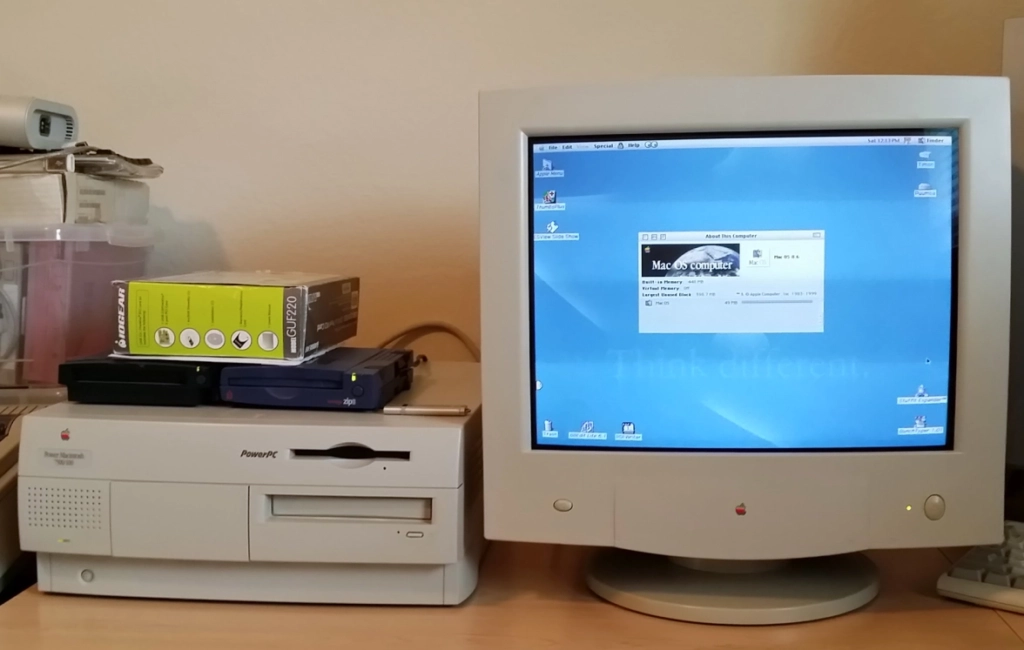In the tech world’s ever-evolving landscape, certain products stand the test of time, etching themselves into the memories of enthusiasts. One such gem from Apple’s past is the Apple Multiple Scan 720 Display. Launched in 1997 as a companion to the Power Macintosh G3 computers, this 17-inch color RGB monitor quickly became a favorite among users for its advanced features and impeccable design.
Released on November 10, 1997, at a starting price of $649, the Apple Multiple Scan 720 Display was a game-changer. Boasting resolutions of up to 1280 x 1024 pixels and a vibrant spectrum of 16.7 million colors, it offered a visual feast for users. The inclusion of a DA-15 video connection added to its versatility, making it the perfect match for the Power Macintosh G3 series.
What made the MultiScan 720 a standout choice in its era? Its on-screen controls, though somewhat cumbersome, were comprehensive, providing users with the ability to fine-tune their visual experience. The sharp image quality at recommended resolutions contributed to its popularity. The compact and attractive case design added a touch of elegance to workstations, making it a preferred choice for many users.
Despite the minimalistic approach with a single button and knob for on-screen controls, the MultiScan 720 did not compromise on functionality. Pressing the button summoned an on-screen menu with controls covering every geometric aspect of the picture, color settings, and preferences for the controls themselves. This thoughtful design approach made it a user-friendly monitor, even for those less acquainted with technical intricacies.
All good things eventually come to an end, and on January 5, 1999, the Apple Multiple Scan 720 Display was discontinued. However, even after 26 years since its release, this iconic monitor still holds a special place in the hearts of Apple enthusiasts. The MultiScan 720 remains a classic, evoking a sense of nostalgia for those who fondly recall the pioneering days of computing.
What is it about the Apple Multiple Scan 720 Display that continues to captivate the Apple community? Perhaps it’s the sheer reliability and quality that defined an era of computing. The brilliant and crisp images produced by the MultiScan 720, coupled with its user-friendly controls, created an unforgettable user experience.
In the ever-changing world of technology, the Apple Multiple Scan 720 Display stands as a testament to Apple’s commitment to innovation and design excellence. Though discontinued in 1999, its legacy lives on in the hearts of enthusiasts who remember the days when the MultiScan 720 was the pinnacle of visual sophistication.
As we celebrate 26 years since its release, let us reflect on the impact this classic monitor had on shaping the computing experiences of a generation. The Apple Multiple Scan 720 Display may be a relic of the past, but its enduring charm continues to resonate in the present, reminding us of the remarkable journey of Apple in the realm of display technology.

Apple Multiple Scan 720 Display Details
| Introduced | November 10, 1997 |
| Discontinued | January 5, 1999 |
| Model Number | M4552 |
| Order Number | Unknown |
| Original Price | $649 |
| Colors | Platinum |
| Weight | 37.5 Ibs. 17 KG |
| Dimensions | 17” H x 16.2” W x 16.9” D 43.18 cm H x 41.14 cm W x 42.92 cm D |
System Requirements
- System Software 7.5 or later
Display Specs
| Type | Shadow Mask CRT |
| Size | 17” |
| Viewable Area | 16.1” |
| Colors | 16.7 million |
| Brightness | N/A |
| Resolutions | 640 x 480 800 x 600 832 x 624 1024 x 768 1152 x 870 1280 x 1024 |
| Viewing Angle | N/A |
| Contrast Ratio | N/A |
| Response Time | N/A |
| Pixel Pitch | 0.28 mm |
| Pixel Density | Unknown |
Connections
| Connection | 1 – DA-15 |
| Audio | None |
| Camera | None |
| Ports | None |
Power
| Maximum Continuous Power | 120 W |
Further Reading and References
- Apple Multiple Scan 720 Display: Technical Specifications – Apple Support
- Apple displays – Wikipedia
- Apple Multiple Scan 720 Display – IT History Society
- New Addition: Multiscan 720 17″ Display – HappyMacs
- Apple Multiple Scan 720 Display Service Source (PDF) – Apple Repair Manuals
Disclaimer: The data presented in this article is under continuous development and has been manually collected from various sources based on their availability. The author of this article may revise this dataset as additional research is conducted and reviewed. Please note that the information is provided “as is” and “as available” without express or implied warranties. The author cannot be held responsible for any omissions, inaccuracies, or errors in the published information. Any warranties relating to this information are hereby disclaimed.
Last updated: December 16, 2023
